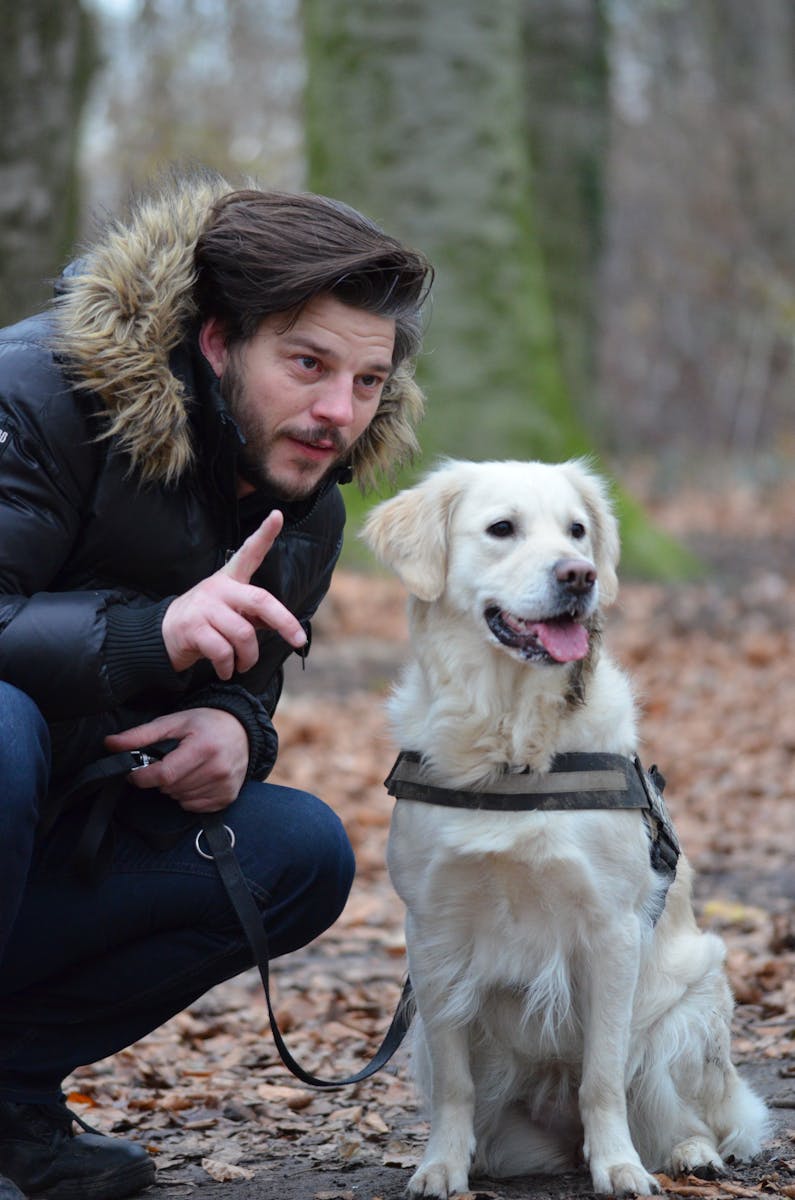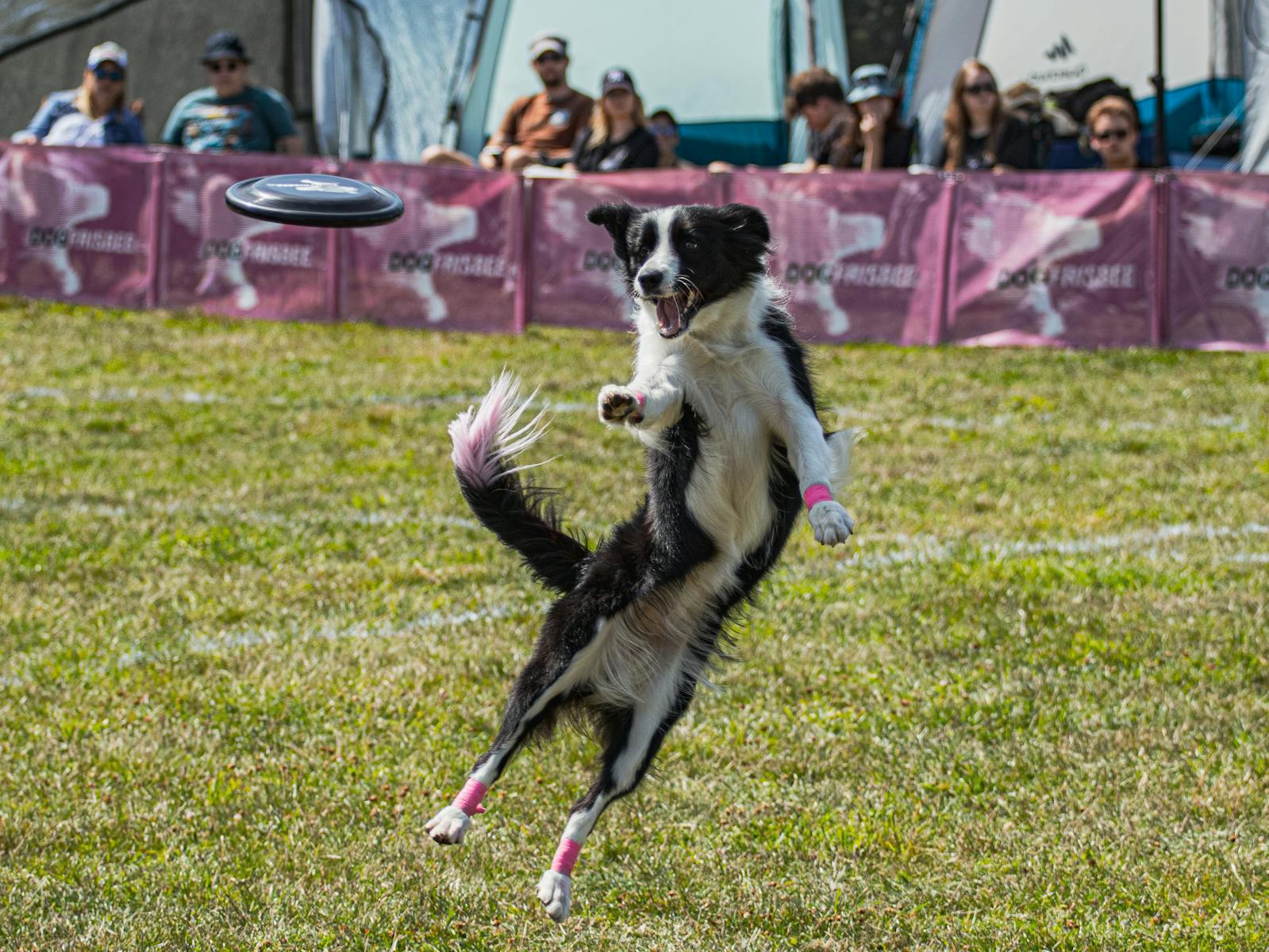The Science Behind Dog Training: What Research Tells Us About Effective Methods
The Importance of Understanding Canine Behavior: Shaping Effective Training Methods
Understanding canine behavior is not just a hobby for dog trainers and owners; it’s a crucial foundation for successful dog training and overall well-being. Just as human behavior is complex and varied, so too is the behavior of our canine companions. With the right insights into behavioral principles, trainers can develop effective methods that not only improve obedience but also nurture the human-animal bond. In this article, we will explore the critical role of canine behavior studies in shaping training methods and provide actionable tips for implementing these principles effectively.
Why Canine Behavior Matters
Canine behavior is the study of how dogs interact with their environment, other animals, and humans. Understanding these behaviors allows trainers and pet owners to identify the underlying motivations for dogs’ actions, which can significantly influence training outcomes. For example, recognizing that a dog is anxious rather than merely disobedient opens the door to addressing the root cause of the behavior.
Studies in canine behavior highlight various factors, including genetics, environment, socialization, and even health, that can affect how dogs behave. This knowledge is essential for devising training strategies that are not only humane but also effective.
Key Behavioral Principles That Inform Training
- Operant Conditioning: This principle, popularized by B.F. Skinner, revolves around rewards and punishments. Dogs learn to associate specific behaviors with positive or negative outcomes. Trainers can use this principle to reinforce desired behaviors with treats, praise, or play while discouraging undesired behaviors through consequences. For instance, rewarding a dog for sitting on command encourages them to offer that behavior more frequently.
- Classical Conditioning: This behavioral concept involves associating a neutral stimulus with an emotional response. A classic example is the way dogs often learn to associate the sound of a bell with mealtime. Trainers can effectively use classical conditioning to modify a dog’s emotional reaction to stimuli, such as desensitizing a dog to fireworks or other loud noises by pairing them with treats in a controlled setting.
- Social Learning: Dogs are highly social animals, and observing how other dogs or humans behave can influence their actions. This principle can be utilized in training by demonstrating desired behaviors. For example, if a dog sees another dog sitting and receiving a treat, it will likely attempt to mimic that behavior. Group training classes can leverage this method to encourage faster learning.
- Habituation: This is the process by which dogs learn to ignore a repeated, irrelevant stimulus. Trainers can use habituation to reduce fear or anxiety around certain noises, environments, or situations. It’s crucial, however, that this process is gradual to avoid overwhelming the dog, which could lead to increased anxiety.
- Motivational Aspects: Different dogs may have varied motivations behind their behaviors. Understanding what a dog values—be it toys, treats, or social interaction—is vital. A trainer’s ability to tailor the approach based on a dog’s personality can result in a more effective training program. For example, a dog motivated by play may respond better to fetch rewards than to food.
Actionable Tips for Effective Training Based on Canine Behavior
- Observe Before You Train: Spend time watching your dog’s behavior in different situations. Take notes on what triggers positive and negative actions. Understanding your dog’s unique behavior will inform your training strategies and help you communicate more effectively.
- Use Consistency: Canine behavior relies heavily on routine. Be consistent with commands, hand signals, and rewards. Ensure that all family members apply the same training methods to avoid confusing the dog.
- Incorporate Positive Reinforcement: Always aim for positive reinforcement rather than punishment. Encourage desired behaviors by rewarding your dog immediately when they perform correctly. The sooner the reward follows the behavior, the clearer the connection will be for the dog.
- Utilize Professional Resources: Consider consulting with a certified dog trainer or animal behaviorist, particularly if you’re facing challenges. They can provide knowledge based on the latest canine behavior research, helping you develop a personalized training plan.
- Make Training a Fun Activity: Keep training sessions short and engaging. Incorporate games that encourage your dog to think and problem-solve. This not only retains their interest but promotes a positive association with training.
Real-World Examples of Canine Behavior in Training
- Service Dogs: Service dog training incorporates an understanding of canine behavior principles, ensuring the dogs are responsive to their owners while remaining calm in various environments. Through structured positive reinforcement, these dogs learn critical tasks that enhance the lives of their human companions.
- Behavioral Modification for Anxiety: Dogs suffering from separation anxiety can greatly benefit from behavioral modification techniques informed by classical conditioning and habituation. This could involve gradually increasing the time a dog is left alone and pairing that experience with treats to create a positive association with their owner’s absence.
Conclusion: The Path to Effective Training
Understanding canine behavior is essential for any dog trainer or owner committed to nurturing a positive relationship with their furry companions. By implementing behavioral principles such as operant conditioning, classical conditioning, and social learning, we can develop effective training techniques that enhance communication and promote good behavior.
As you embark on your dog training journey, remember the profound impact these principles can have on your dog’s growth and development.

The Role of Reinforcement: Understanding Positive Reinforcement in Dog Training
Positive reinforcement is one of the most effective training techniques, especially in the realm of canine behavior. By offering rewards for desired actions, trainers can significantly enhance a dog’s learning process. This investigative approach stems from years of research, emphasizing the profound impact that positive reinforcement can have on behavior modification. In this section, we will delve into the concept of positive reinforcement, share empirical findings, and offer practical strategies for incorporating this vital method into your training toolkit.
What is Positive Reinforcement?
Positive reinforcement occurs when a specific behavior is encouraged by the presentation of a pleasant stimulus right after the desired action. This can take the form of treats, praise, toys, or even affection. The underlying mechanism is rooted in operant conditioning, a fundamental principle in behavioral psychology that posits behaviors followed by rewards are more likely to be repeated.
For example, when a dog sits on command and is rewarded with a treat immediately afterward, that dog learns to associate the behavior (“sitting”) with the positive outcome (the treat). This strategic use of rewards builds a robust link between the behavior and its outcome, effectively increasing the likelihood of the behavior being repeated in the future.
Research Findings Supporting Positive Reinforcement
Numerous studies underscore the significance of positive reinforcement in shaping behavior and promoting learning in dogs. Research conducted by the University of Bristol points to the overwhelming effectiveness of this method compared to aversive training techniques. Here are some critical findings:
- Enhanced Learning Rates: A study published in the Journal of Veterinary Behavior found that dogs trained using positive reinforcement learned commands faster and retained the behavior longer than those trained through negative reinforcement. The positive atmosphere created by enjoyable rewards fosters an eagerness to learn.
- Reduction in Fear-Based Responses: Research from the Association of Professional Dog Trainers indicates that dogs exposed to positive training techniques exhibit reduced stress levels. Conversely, aversive training can lead to increased fear and anxiety, negatively impacting their long-term behavior.
- Improved Human-Animal Bond: A study in the journal Animal Welfare found a strong correlation between positive reinforcement training methods and the strength of the human-animal bond. Dogs trained with positive techniques were more willing to engage and perform for their owners, fostering trust and cooperation.
The Impact of Rewards on Behavior
Rewards can significantly influence behavior, acting as both motivation and reinforcement. Understanding how to effectively use them can dramatically alter your dog’s learning experience. Here are fundamental points to consider:
- Timing is Crucial: The reward must be given immediately after the desired behavior. This immediacy helps the dog make the connection between the action and the reward. For instance, if a dog sits and is rewarded several seconds later, they may forget what behavior prompted the treat, diluting the effectiveness of the training.
- Variety Keeps Engagement High: Dogs, like humans, can get bored with the same rewards. Mixing up rewards—using treats one day and toys the next—can maintain interest and motivation. Additionally, vary the type of treat based on your dog’s preferences. A high-value treat may be more effective for challenging tasks.
- Use of Praise and Affection: While food rewards are often effective, do not underestimate the power of verbal praise and affection. Many dogs respond enthusiastically to encouraging words or a loving pat, especially when paired with tangible rewards. This multi-faceted approach can enhance learning by reinforcing positive emotions.
Actionable Tips for Implementing Positive Reinforcement
- Identify Value-Driven Rewards: Determine what your dog values most—treats, toys, or social interaction. Testing various rewards can help pinpoint what triggers the best response.
- Create a Reward System: Consider establishing a point system where your dog can earn points for good behavior, which they can “cash in” for a favorite activity or treat. This gamification adds excitement to training.
- Be Patient and Consistent: Dogs, like humans, can have off days. Maintain a consistent approach to rewards and be patient. If a behavior isn’t improving, re-evaluate your method, and consider adjusting the reward system.
- Use Shaping Techniques: Breaking down complex behaviors into smaller, achievable steps can make training more manageable. Reward your dog for each incremental step towards the ultimate goal, building their confidence along the way.
- Monitor Behavioral Changes: Observe your dog’s responses to different rewards and behaviors. This vigilance allows you to adapt your strategy in real-time, ensuring your training remains effective and engaging.
Conclusion: The Power of Positive Reinforcement
Incorporating positive reinforcement into your dog training regimen can lead to significant improvements in behavior, learning, and the relationship between the dog and its owner. Understanding how rewards influence behavior is paramount for any trainer or dog owner.
As you implement these strategies into your training approach, remember the research shows that a positive, reward-centered environment fosters not only learning but also builds trust and affection.

Canine Learning Theories: Classical Conditioning and Operant Conditioning in Dog Training
Understanding how dogs learn is pivotal for effective training and behavioral modifications. Two foundational concepts in canine learning theories are classical conditioning and operant conditioning. These theories not only explain how dogs acquire new behaviors but also offer trainers and pet owners a framework to utilize in practical training scenarios. Here, we will delve into these learning theories, explore key studies that support them, and provide actionable insights for implementation in your training practices.
Classical Conditioning: The Power of Association
Classical conditioning, a principle made famous by Ivan Pavlov, involves creating associations between a previously neutral stimulus and an emotional response. In the case of dog training, this can be incredibly powerful in shaping a dog’s behavior.
Key Study: One of the most notable studies demonstrating classical conditioning is Pavlov’s experiment with dogs, where he rang a bell before presenting food. After several repetitions, the dogs began to salivate merely at the sound of the bell, even in the absence of food. This shows how effectively dogs can form associations.
Actionable Tips for Applying Classical Conditioning:
- Use Positive Reinforcement: Pair desirable behaviors with positive stimuli. For instance, if you’re introducing a new command, such as “stay,” first say the command and immediately follow it with a treat when the dog remains in place.
- Desensitization Techniques: If your dog is afraid of loud noises, gradually expose them to the noise at a low intensity while providing treats. This will create a positive association between the scary stimulus and something they enjoy.
Operant Conditioning: Rewarding and Discouraging Behavior
Operant conditioning, as theorized by B.F. Skinner, revolves around reinforcing behaviors through rewards and punishments. It is often described by the ABC model: Antecedent, Behavior, Consequence. This framework helps trainers understand how to modify behaviors effectively.
Key Study: Skinner’s experiments with rats in operant conditioning chambers (Skinner boxes) highlighted how behavior could be shaped through reinforcement schedules. When rats learned that pressing a lever yielded food, they became more likely to repeat the behavior. This principle holds true for canine training as well.
Actionable Tips for Utilizing Operant Conditioning:
- Establish Clear Command Signals: Use consistent verbal cues and hand signals, so your dog knows exactly what behavior is expected. This consistency helps reinforce the behavior more effectively.
- Immediate Feedback: Reward your dog immediately after they perform the desired behavior. The quicker the reinforcement follows the action, the stronger the association between the two.
- Vary the Rewards: To maintain your dog’s interest, vary the types of rewards (treats, praise, playtime) based on what motivates them most.
Social Learning: Learning Through Observation
Dogs are naturally social creatures that can learn behaviors by observing both humans and other dogs. This learning theory emphasizes the importance of modeling behaviors, making it invaluable in training settings.
Key Study: Albert Bandura’s social learning theory suggests that individuals learn by observing others. In dog training, a notable application of this theory is seen in group training classes where dogs can observe their peers receiving rewards for desirable behaviors.
Actionable Tips for Implementing Social Learning:
- Utilize Peer Learning: Engage your dog in group training classes where they can observe and learn from other dogs. This environment fosters mimicry, which can accelerate learning.
- Model Desired Behaviors: If you have other well-trained dogs, incorporate them into training sessions. When your dog sees another dog following commands successfully, they’re likely to emulate that behavior.
Habituation: Reducing Fear and Anxiety
Habituation is a learning process where dogs learn to ignore stimuli that are neither harmful nor rewarding. This process is essential in helping dogs cope with anxieties or fears.
Key Study: Research indicates that gradually exposing dogs to previously fearful stimuli, in a controlled environment, can result in reduced fear responses over time.
Actionable Tips for Applying Habituation:
- Gradual Exposure: If your dog is fearful of certain noises (like thunder), gradually expose them to recordings of the sounds at a low volume while providing comforting rewards to build a sense of security.
- Create Positive Experiences: Pair exposure to previously frightening stimuli with pleasurable activities like play or treats, reinforcing a sense of security and calmness.
Conclusion: Harnessing Learning Theories for Effective Training
In understanding canine learning theories such as classical conditioning, operant conditioning, social learning, and habituation, trainers and dog owners can develop effective methods to shape behaviors beneficially. By implementing these techniques during training sessions, you foster a positive learning environment that supports growth and strengthens the bond between you and your canine companion.
As you explore these learning theories and their applications, remember that patience and consistency are key components of successful training.

Social Learning in Dogs: Understanding the Canine Capacity for Observational Learning
As we explore various aspects of canine behavior, it’s essential to delve into one of the most fascinating topics: social learning in dogs. Social learning refers to the ability of dogs to learn from observing the behavior of others, whether they are fellow canines or humans. This phenomenon can significantly impact training methods and the overall development of a pet’s behavior. By examining studies and real-world examples of social learning, we can enhance our approach to dog training and deepen our understanding of how dogs truly connect with us and each other.
The Mechanism of Social Learning in Dogs
- Observational Learning: Dogs are natural observers; they watch and learn from their surroundings. This ability can be harnessed in training settings where a dog can see another dog perform a desired behavior. For instance, if dog A observes dog B sitting and receiving a treat, dog A may be more inclined to imitate that behavior to achieve the same reward.
- Imitative Learning: This is a more advanced form of observational learning where a dog mimics specific actions they have seen performed by others. For example, a dog that watches its owner open a door may learn to nudge the door with its nose or paw.
- Local Enhancement: This refers to a less direct form of learning where a dog is drawn to an area or object due to the actions of another dog or human. An example is when one dog sees another dog excitedly playing with a toy; this can lead the observing dog to explore and engage with that toy themselves.
Significant Studies Illustrating Social Learning
Research has demonstrated the importance of social learning methods in dogs, highlighting how this behavioral aspect can inform training processes:
- The “Two Action” Study: A study by the University of Vienna showed that when dogs were presented with a choice between two ways to operate a food dispenser—either using a paw or their nose—dogs tended to imitate the method used by the human demonstrator. This suggests that dogs can process and replicate learned behaviors, reinforcing the potential of modeling in canine training.
- Looking at Humans: Research published in Animal Cognition found that dogs are adept at figuring out the intentions of humans based on their actions. For example, when a human deliberately looked towards a hidden treat, dogs were more likely to investigate in that direction, showcasing their ability to interpret social cues.
Practical Applications of Social Learning in Dog Training
- Group Training Sessions: Utilizing group classes takes advantage of social learning models. When dogs see their peers learning and performing tricks or commands, they become more engaged and are likely to mimic those behaviors. This environment enhances the social aspect of learning, making training an enjoyable group activity.
- Modeling Desired Behaviors: Dog trainers can implement modeling techniques by demonstrating specific commands or behaviors. By allowing a well-trained dog to showcase desired behaviors—like sitting, staying, or performing tricks—other dogs can learn through observation. This method can be particularly effective in motivating less confident dogs.
- Encouraging Positive Relationships: When dogs observe humans engaging positively—whether through play or training—they are more likely to associate such interactions with positive experiences. Encourage your family and friends to engage with your dog to enhance their social learning opportunities.
Actionable Tips for Utilizing Social Learning in Training
- Create a Social Environment: Enroll your dog in a group training class or organize playdates with well-behaved dogs. This not only helps with socialization but also provides opportunities for observational learning.
- Use Multi-Dog Environments: If you have multiple dogs, allow them to witness each other’s training sessions. This can reinforce desired behaviors as they learn from one another in a familiar space.
- Leverage Human Interaction: Involve family members in training by having them demonstrate commands. This exposes your dog to various techniques and personalities, enriching their learning experience.
- Celebrate Progress: Encourage all dogs in a training setting, regardless of their progress. Positive reinforcement from their peers can promote cooperation and enthusiasm, enhancing the social learning experience.
Conclusion: Unlocking the Power of Social Learning in Dogs
The concept of social learning in dogs opens new avenues for trainers and pet owners alike. Observational learning not only enhances a dog’s ability to pick up new skills but also builds stronger bonds within the human-dog relationship and among canine companions.
By implementing social learning techniques into your training routine, you leverage a natural ability of dogs that can lead to faster results and also enrich their lives.

The Impact of Stress on Training: Understanding Its Influence on Learning and Retention
Stress has become a buzzword in various fields, but when it comes to dog training, it takes on a pivotal role that is often overlooked. The canine brain, much like our own, responds to stress with a cascade of physiological and psychological effects that significantly impact learning and retention. Exploring this intricate relationship is essential for optimizing training processes and ensuring successful outcomes for both dogs and their handlers.
How Stress Affects Learning and Retention
When a dog experiences stress, whether from environmental factors, social interactions, or even training itself, it triggers the release of stress hormones like cortisol and adrenaline. These hormones can hinder the brain’s ability to focus, process information, and retrieve learned skills. Research indicates that high levels of stress can lead to difficulties in memory retention and can dampen a dog’s responsiveness during training sessions.
- Cognitive Function: Studies demonstrate that elevated cortisol levels can impair cognitive function in dogs. A research study published in the Journal of Veterinary Behavior indicated that dogs exposed to stressful environments performed poorly on tasks requiring memory recall and problem-solving compared to their relaxed peers.
- Learning Challenges: In a meta-analysis of various canine training methods, researchers found that dogs trained in high-stress contexts, such as busy urban environments or during periods of owner anxiety, displayed a marked decrease in learning efficiency. Comprehension dropped significantly when compared to dogs trained in a calm and secure atmosphere.
- Behavioral Changes: Stress can lead to unwanted behaviors, such as aggression or withdrawal, further compounding training challenges. Recognizing stress-induced behavioral changes is vital for trainers looking to make progress in their training regimens.
The Relationship Between Stress Levels and Training Effectiveness
Understanding how stress influences training allows trainers and owners to adapt their methods and mitigate adverse effects. Here are some insights:
- Calm Environments are Key: Research shows that dogs perform better in low-stress, controlled environments. This principle should guide the planning of training sessions. Conducting classes in quiet spaces, such as private yards or less crowded parks, can alleviate stressors and enhance learning.
- Pacing is Important: Training should be incremental and always tailored to the dog’s comfort level. Introducing new commands too quickly can lead to overwhelm. Gradual exposure to lessons helps in building a foundation of trust and reduces stress, making it easier for dogs to retain information.
- Routine and Predictability: Establishing a consistent routine minimizes stress by providing dogs with a sense of security. Predictability in training sessions — including timing, structure, and even the types of rewards used — ensures dogs know what to expect, paving the way for better learning outcomes.
Actionable Tips for Reducing Stress in Training
To foster an optimal learning environment for dogs, here are some focused strategies:
- Use Positive Reinforcement: Create an atmosphere of encouragement rather than fear. Positive reinforcement techniques, such as treats, praise, or playtime, can significantly mitigate stress levels, enhancing a dog’s eagerness to learn.
- Read the Room: Become adept at identifying stress signs in dogs, such as panting, whining, or avoiding eye contact. Fine-tuning your ability to read their body language can enable you to adjust your training approach promptly.
- Mix It Up: Incorporating varied training methods and environments can keep sessions engaging and reduce anxiety caused by monotony. Change the setting occasionally or vary your rewards to maintain the dog’s interest while minimizing stress.
- Pre-Training Calm Exercises: Consider implementing calming exercises before training sessions. Simple methods like gentle petting, massage, or short walks can help bring your dog’s stress levels down before you start working.
- Monitor Owner Stress: As dogs are sensitive to human emotions, trainers and owners should manage their own anxiety levels. When humans are relaxed, dogs are more likely to follow suit, contributing to a more effective learning environment.
Real-World Examples of Stress Impacting Training
- Service Dog Training: In service dog training programs, trainers have observed that dogs in high-stakes environments, like hospitals or busy urban centers, often exhibit reduced learning capabilities under stress. Programs that incorporate stress-reduction strategies, such as breaks and controlled exposure to these environments, yielded better-trained service animals.
- Behavioral Training for Fearful Dogs: Dogs exhibiting reactive behaviors due to stress can greatly benefit from gradual desensitization techniques paired with positive reinforcement. For instance, a study showed that dogs who were slowly introduced to their triggers alongside enjoyment, such as treats or play, learned to respond positively rather than react negatively to perceived threats.
Conclusion: The Path to Effective Training
Understanding the profound impact of stress on a dog’s ability to learn is essential for anyone involved in training. By implementing strategies that mitigate stress and foster a calm environment, trainers and owners can significantly enhance their dog’s learning capacity. The intersection of stress management and training effectiveness cannot be overlooked if we aim to nurture our canine companions into well-adjusted, obedient members of the family.

The Use of Clicker Training: A Scientifically Supported Method for Dog Training
Clicker training has emerged as a popular and effective method for training dogs, grounded in scientific principles that enhance the learning experience for both the dog and the trainer. Through the use of a small handheld device that makes a distinct clicking sound, clicker training emphasizes positive reinforcement, allowing trainers to communicate clear feedback to their canine companions. This section will delve into the mechanics of clicker training, its scientific foundations, and studies that showcase its efficacy in diverse dog training scenarios.
Understanding Clicker Training
Clicker training operates on the principles of operant conditioning, where behaviors are learned through associations with positive outcomes. The clicker functions as a bridge between the behavior and the reward, making it an invaluable tool for effective communication in dog training.
How Clicker Training Works:
- The Click as a Marker: When a dog performs the desired behavior, the trainer clicks immediately. This sound serves as a distinct marker, allowing the dog to connect their action to the reward that follows.
- Timing is Key: The timing of the click is crucial. It should occur the moment the behavior is executed so that the dog can easily link the action with the reward.
- Consistency with Rewards: After each click, a treat or other form of positive reinforcement is given. This ensures that the dog associates the behavior with a positive outcome, encouraging repetitions of the behavior in the future.
Scientific Studies Supporting Clicker Training
Numerous studies have highlighted the effectiveness of clicker training across varied dog training scenarios, reinforcing its credibility as a leading training technique.
- Study on Obedience Training: A study published in the Journal of Veterinary Behavior investigated the effectiveness of clicker training versus traditional methods. Researchers found that dogs trained with clickers were more likely to follow commands such as “sit,” “stay,” and “come,” often demonstrating higher levels of obedience and quicker response times. This showcases how clicker training enhances learning speed and command retention.
- Training Assistance Dogs: Research conducted by the University of Lincoln examined the training methods for assistance dogs. The study showed that employing clicker training expedited the learning process. Assistance dogs that were clicker trained took significantly fewer training sessions to master essential tasks compared to those trained with conventional methods. This highlights the method’s efficiency, particularly in high-stakes environments where precision is crucial.
- Behavior Modification: Clicker training has also been effective in rehabilitating dogs with behavioral issues. A study in the journal Animal Welfare observed how clicker training was used to reduce aggressive behaviors in shelter dogs. Over time, dogs exposed to clicker training displayed decreased aggression and improved social interactions. By focusing on positive reinforcement, the dogs learned desirable behaviors instead of merely avoiding punishment.
Benefits of Clicker Training
The advantages of clicker training extend beyond its scientific backing, offering numerous benefits for trainers and their canine companions.
- Precision: The sound of the clicker provides immediate feedback, reducing ambiguity for the dog. This clarity helps dogs understand exactly which actions are being reinforced.
- Engagement: Clicker training keeps training sessions fun and engaging. The interactive nature encourages dogs to actively participate, making the learning process more enjoyable for both parties.
- Enhanced Bonding: Through consistent and positive communication, clicker training nurtures the bond between dogs and their trainers. This mutual understanding can also lead to a greater level of trust.
Actionable Tips for Implementing Clicker Training
To maximize the benefits of clicker training, consider the following practical tips:
- Start with Basic Commands: Begin with simple commands like “sit” or “down” to establish a foundational understanding of the click-and-reward process.
- Keep Sessions Short: Aim for brief training sessions of 5-10 minutes to maintain your dog’s focus and enthusiasm.
- Be Patient: Some dogs may require more time to grasp concepts than others. Stay patient and consistent, as this will foster a supportive learning environment.
- Gradually Increase Difficulty: Once your dog masters basic commands, gradually introduce more complex tasks, allowing their learning to progress naturally.
- Incorporate Play: Use play as a reward during training sessions. This can transform a learning experience into a fun game, helping enhance your dog’s engagement.
Real-World Examples of Clicker Training Success
- Rescue Organizations: Many animal rescue organizations have adopted clicker training to rehabilitate dogs who exhibit fearful or aggressive behaviors. By nurturing a positive experience through clicker training, these organizations have successfully placed previously unruly dogs in loving homes.
- Agility Training: In dog sports like agility, clicker training has proven invaluable. Handlers use the clicker to mark precise moments when their dogs navigate obstacles correctly, improving their performance and building confidence.
Conclusion: The Path to Effective Training
Clicker training stands out as a scientifically backed, humane, and enjoyable method for dog training. By utilizing the clicker as a marker for positive behaviors and reinforcing them with rewards, trainers can establish effective communication, foster a strong bond with their dogs, and achieve impressive training results.
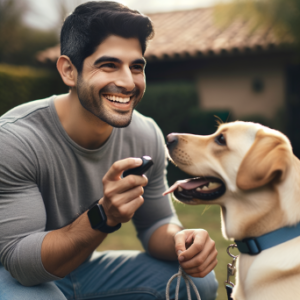
Timing and Consistency: The Cornerstones of Effective Reinforcement and Training Practices
When it comes to training dogs, timing and consistency play pivotal roles. Both factors directly influence learning outcomes, shaping a dog’s response to commands and behaviors. Understanding how timing and consistency work together can not only improve training effectiveness but also enhance the bond between dogs and their owners. Research has shown that proper timing in giving rewards or consequences, coupled with consistent application of training methods, creates a stronger learning environment for our canine companions.
The Science Behind Timing in Training
Timing refers to the immediacy of reinforcement or punishment following a behavior. According to a study published in the journal Animal Behavior, dogs best learn through immediate reinforcers, meaning the reward must occur within a short timeframe following the desired behavior. This concept hinges on principles of operant conditioning, whereby behaviors are either encouraged (reinforced) or discouraged (punished) by consequences.
- Immediate Reinforcement: A dog that receives a treat just seconds after sitting is more likely to associate the action of sitting with getting a reward. Research indicates that a delay longer than a few seconds can diminish the dog’s ability to connect the dots between their behavior and the resulting consequence.
- Signaling Correct Behavior: Consistent timing in reinforcement also signals to the dog that they are on the right track. If you wait too long to reward, the dog might not understand which behavior they are being rewarded for, which can lead to confusion and frustration.
The Importance of Consistency in Training
Consistency refers to the uniform application of training techniques and commands across different situations and individuals. A study highlighted in the journal Applied Animal Behaviour Science underscores that dogs thrive on routine and predictable interactions.
- Reinforcement Schedule: A reinforcement schedule should remain constant; for example, if a dog sits on command, every family member should provide the same response—whether it be a treat, praise, or playtime. Discrepancies can confuse the dog, leading them to second-guess their actions and create uncertainty about what is expected.
- Consistent Commands: Using the same words and hand signals helps dogs learn more quickly. For instance, if one person says “sit” while another says “down” for the same action, the dog may become perplexed and less likely to respond promptly. This inconsistency can lead to delays in training progress.
Practical Strategies for Enhancing Timing and Consistency
Here are some actionable tips to enhance the effectiveness of reinforcement and training practices by focusing on timing and consistency:
- Immediate Rewards: Always aim to reward or correct behavior immediately. If your dog follows a command, deliver the treat right away to solidify the connection in their mind.
- Set a Routine: Establish a training schedule for your dog that allows for both consistency and variety. Regular training sessions will foster an environment where your dog understands what to expect.
- Involve Everyone: Ensure that family members or anyone interacting with your dog are on the same page in terms of commands and reinforcement methods. This collective understanding is vital for a well-trained dog.
- Use Clickers: A clicker can serve as an excellent tool for marking the exact moment your dog performs the desired behavior. This technique provides positive reinforcement immediately, minimizing confusion.
- Maintain Patience: Training is a process that requires time and patience. If you’re consistent with your timing and reinforcement, your dog will more effectively learn new skills.
Real-World Examples of Timing and Consistency in Training
- Agility Training: In agility training, consistency is key. Handlers must use the same cues and maintain a uniform approach throughout different competitions. The result is greater clarity for the dog, leading to improved performance on obstacle courses.
- Counterconditioning: For dogs with fear-based behaviors, employing consistent timing and reinforcement is essential during counterconditioning. For example, if a dog is afraid of strangers, introducing a new person with consistent timing—rewarding calm behavior immediately—can transform a fear response into a positive association.
Conclusion: The Path to Effective Training
In summary, timing and consistency are not just best practices; they are fundamental components of effective reinforcement and training strategies. Trainers who understand and incorporate these components into their practices can bridge the gap between a dog’s actions and their understanding of those actions.
Enhancing your dog’s readability to respond positively to training begins with mastering the art of timing and ensuring that all household members apply consistent reinforcement techniques. Experience a noticeable improvement in your training outcomes by embracing these principles.

Understanding Canine Communication: The Language of Dogs
Dogs are our loyal companions, but they also possess a complex system of communication that often goes unnoticed by their human counterparts. Just as understanding human language is crucial for effective communication, recognizing canine communication enriches our relationships with dogs and enhances training effectiveness. In this section, we will explore the various ways dogs communicate, the nuances of their signals, and how this understanding can transform training strategies.
The Many Ways Dogs Communicate
- Body Language: Canine communication is largely visual. Dogs utilize their body posture, tail position, ear orientation, and facial expressions to convey their feelings and intentions.
- Tail Position: A wagging tail might indicate excitement or happiness; however, the height and speed of the wag can vary in meaning. A high, fast wag could indicate excitement, while a slow wag at a lower height might signal insecurity or submission.
- Posture: A dog that stands tall with an erect tail and ears pricked is likely alert or confident, whereas a dog that crouches with tucked ears and a lowered tail is showing submission or fear.
- Face and Eyes: Dogs also communicate through eye contact; a prolonged stare could be perceived as a challenge, while averting gaze can indicate submission or a desire to avoid confrontation.
- Vocalizations: From barking and growling to whimpering and howling, vocalizations are a crucial part of how dogs express themselves.
- Barking can serve various purposes, such as alerting you to an intruder, expressing excitement, or demanding attention. The pitch and intensity of the bark can provide additional context.
- Growling doesn’t always indicate aggression; a dog may growl while playing, indicating that they are excited and engaged.
- Scent Communication: While dogs can’t speak in words, they have an incredible sense of smell that is key to their communication. They use scent marking as a way to establish territory, communicate reproductive status, and identify other dogs.
- Urine Marking: Dogs often use urine marking to communicate their presence to other dogs. This informs other dogs about their identity, health status, and readiness to mate.
- Scent Detection: Studies have shown that dogs can detect human emotions based on scent. For example, they can sense cortisol levels in humans (a stress hormone), which can influence their behavior towards us.
The Benefits of Understanding Canine Communication
- Enhanced Training Techniques: By recognizing and interpreting canine communication, trainers can tailor their methods to align with the dog’s natural forms of expression. This means acknowledging when a dog may feel anxious or overexerted to avoid overwhelming them during training.
- Example: A trainer recognizing a dog’s signs of stress—such as a tucked tail and avoidance behavior—can adapt the training approach by taking a break, thereby reducing anxiety and fostering a more positive learning atmosphere.
- Improved Owner-Dog Bond: Understanding canine signals builds trust between dogs and their owners. When owners can interpret their dog’s body language and vocalizations accurately, they can respond appropriately to their needs and feelings, deepening their bond.
- Example: A dog owner who learns to recognize when their dog is indicating discomfort or fear (e.g., lip licking, yawning, or turning away) can take steps to create a more supportive environment for their dog, leading to a more secure relationship.
- Preventing Behavioral Issues: Misunderstanding a dog’s signals can lead to frustration for both the pet and the owner, potentially resulting in behavioral problems. Being able to read and react to a dog’s communication can preempt these challenges.
- Example: If a dog is growling during play, and the owner misinterprets it as aggression and stops the play, the dog might start associating play with negative outcomes, decreasing the likelihood of playful interactions in the future.
Real-World Applications of Understanding Canine Communication
- Therapeutic Settings: In therapy situations with emotional support animals, professionals utilize their understanding of canine communication to ensure that the dog feels comfortable and safe. By recognizing cues of anxiety or discomfort, the handler can adjust the dog’s activities or environment accordingly.
- Rescue and Rehabilitation: Dogs that have been through trauma may exhibit fearful or anxiety-driven behaviors. By understanding these communication signals, trainers can develop individualized rehabilitation plans that respect the dog’s comfort levels and promote recovery without adding stress.
Conclusion: Harnessing the Power of Canine Communication
Understanding canine communication is pivotal for both trainers and dog owners looking to foster a peaceful, cooperative relationship with their furry friends. By employing knowledge of dogs’ body language, vocalizations, and scent communication, we can enhance training effectiveness, strengthen bonds, and prevent behavioral issues.
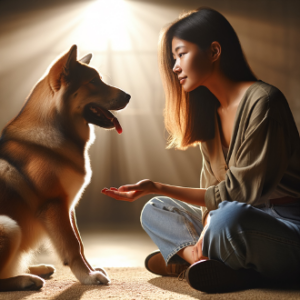
Motivational Factors in Training: Understanding What Drives Dogs During Training Sessions
When it comes to training our canine companions, one of the most crucial aspects to consider is what motivates them. Just like humans, dogs are driven by various rewards that can significantly influence their learning and behavior. In this section, we will delve into the facets of motivation—specifically, the types of rewards such as food, toys, and social interaction, and how they impact training outcomes.
The Power of Rewards in Dog Training
Research has shown that different types of rewards can elicit different responses in dogs. By understanding what motivates your dog, you can craft a more effective training program tailored to their needs. Here are some common motivation factors used in dog training:
- Food Rewards: Food is often considered the most potent motivator for dogs, particularly during initial training phases. The use of treats can elicit immediate compliance and create a strong, positive association with specific behaviors.
- Highlight: Studies indicate that dogs are more likely to repeat behaviors that are immediately followed by a food reward (Fritz et al., 2012). This makes food a practical tool for reinforcing commands like “sit” or “stay.”
- Action Tip: Experiment with various types of treats, from high-value options like freeze-dried liver to daily kibble, to find what excites your dog the most.
- Toys and Play: For many dogs, especially those with higher energy levels, play and interaction with toys outperform food as a motivator. Interactive toys such as tug ropes or frisbees can drive dogs to engage willingly in training.
- Highlight: Research has demonstrated that dogs trained with toys exhibit increased enthusiasm toward the learning process compared to those trained solely with food (Zentall, 2006). This is particularly effective for training during agility or obedience routines.
- Action Tip: Incorporate toy play as a reward in training sessions. This may include allowing your dog to play fetch after successfully completing a command or trick.
- Social Interaction: Dogs are inherently social creatures. The attention and praise from their owners can be just as rewarding as any tangible item. Social rewards can strengthen the bond between owner and pet, making the training process more enjoyable.
- Highlight: A 2014 study found that dogs trained with substantial verbal praise showed increased obedience in comparison to those who received no social interaction (Harris & Ritchie, 2014).
- Action Tip: Use enthusiastic verbal cues and physical affection as immediate rewards after your dog performs a desired behavior. Ensure your tone is celebratory, as dogs can pick up on emotional cues.
Combining Motivational Factors for Optimal Results
The most effective training often uses a combination of the above motivation factors. Tailoring the rewards based on your dog’s personality and what excites them the most can create a more effective training environment.
- Actionable Steps:
- Observe Your Dog: Watch how your dog reacts to different rewards. Note which motivates them best in various situations.
- Create a Reward Hierarchy: Develop a tiered system of rewards, where high-value treats or favorite toys are used for challenging commands, and lower value rewards are used for simple behaviors.
Real-World Examples of Motivation in Action
- Agility Training: In agility training, many handlers use a combination of verbal praise and toy rewards. This dual approach not only keeps the dog engaged but also builds a positive emotional response to the training environment, improving performance and enthusiasm.
- Rescue Dog Rehabilitation: For dogs coming from stressful backgrounds, social interaction often outweighs food or toys in terms of motivation. Trainers often utilize plenty of praise and gentle petting to build trust and create a safe space for learning, slowly introducing other rewards once a bond is formed.
Conclusion: Unlocking Potential Through Motivation
Understanding what drives your dog is paramount for successful training. By leveraging food, toys, and social interaction effectively, you can create a more dynamic and rewarding learning experience for your canine friend. Every dog is unique, so observing and adapting your methods to align with their motivational drivers will ensure a fruitful training journey.

Tailoring Training to Individual Dogs: The Importance of Customizing Training Methods
Just as every dog is unique in personality and temperament, effective training requires a tailored approach to meet each dog’s specific needs. Customizing training methods can significantly enhance the effectiveness of your efforts, leading to a more harmonious relationship with your four-legged friend. In this section, we will explore the importance of tailoring training to individual dogs, delve into practical strategies, and offer real-world examples that demonstrate how personalized training can make all the difference.
Understanding the Individual Dog
- Recognizing Personality Types:
- Just like humans, dogs exhibit a variety of personality traits. Some may be outgoing and eager to please, while others may be shy or more independent. Understanding a dog’s personality can guide the selection of appropriate training methods.
- For instance, an enthusiastic Labrador Retriever may thrive on high-energy training sessions filled with games and rewards, whereas a sensitive Bichon Frise might respond better to gentle encouragement and calmer environments.
- Assessing Temperament:
- A dog’s temperament is a reflection of its emotional responses. Dogs may be classified into categories such as fearful, aggressive, or assertive. Tailoring training to accommodate a dog’s temperament is crucial for successful outcomes.
- For example, for a fearful dog that tends to retreat when faced with new experiences, gradual exposure combined with positive reinforcement can build confidence. A trainer might start with short training sessions in safe environments before progressing to more challenging situations.
- Adapting to Life Stages:
- Puppies, adults, and senior dogs have vastly different needs and capabilities. Training should align with the dog’s life stage to ensure effectiveness.
- For instance, a juvenile dog bursting with energy may benefit from an emphasis on impulse control and basic obedience, while a senior dog’s training could focus more on gentle physical exercise and socialization to keep their spirits high.
Actionable Tips for Tailoring Training
To ensure that training sessions are effective and enjoyable for your unique dog, consider implementing the following strategies:
- Use Individualized Assessment Tools: Create a profile of your dog that outlines their personality, temperament, and behavioral triggers. Tools like personality tests can help determine the best approach to training.
- Vary Rewards Based on Motivation: Different dogs respond to various types of reinforcement. Experiment with food, toys, praise, and play to discover what motivates your dog best. For example, herding breeds may respond well to toys that mimic chasing while scent hounds may prefer food-based rewards.
- Custom Training Plans: Develop a training plan that emphasizes your dog’s strengths while addressing specific challenges. If your dog excels in retrieving but struggles with basic commands, focus on integrating those commands into retrieval games.
- Monitor and Adjust: Be open to adjusting your training methods based on your dog’s progress. If a strategy isn’t working, step back and reassess the situation to find a more effective approach that accommodates your dog’s needs.
Real-World Examples of Custom Training
- Case Study: Alex and Max the Rescue Dog:
- Alex adopted Max, a rescue dog who had experienced significant trauma. Observing that Max often cowered during loud noises, Alex implemented desensitization training using classical conditioning. Gradually exposing Max to recorded sounds of thunderstorms while offering treats helped him build resilience. Over time, Max became less fearful, showcasing the power of tailored training efforts based on individual needs.
- Case Study: Olivia and Bella, the Shy Poodle:
- Bella, a shy Poodle, would often hide during interactions with new people. Olivia recognized that a traditional group training class could overwhelm her. Instead, she opted for one-on-one sessions in a calm environment, rewarding Bella with treats for approaching new humans. This gradually built Bella’s confidence, demonstrating how a customized, low-pressure environment can facilitate learning for a timid dog.
- Case Study: Tom and Bear, the High-Energy Shepherd:
- Tom had a German Shepherd named Bear who exhibited hyperactive behavior during training sessions. Identifying Bear’s need for high-energy engagement, Tom incorporated activities like agility training and interactive games alongside traditional commands. This not only focused Bear’s energy positively but also fostered a strong bond between Tom and Bear.
Conclusion: The Path to Tailored Training
Customizing training methods to fit the unique personality and temperament of each dog enhances the training experience while fostering a deeper bond between owner and pet. By recognizing individual differences, adapting to lifestyle changes, and applying effective training techniques, owners and trainers can provide their dogs with the best chance for success.

The Importance of Early Socialization: Understanding Its Impact on Behavior and Training
Socialization is a critical component of a puppy’s development, and its significance cannot be overstated. Just as humans thrive through interactions with others in their formative years, puppies benefit immensely from early socialization experiences. Research shows that positive social interactions during crucial developmental periods can lead to well-adjusted, confident dogs and greatly reduce behavior issues later in life.
The Role of Critical Socialization Periods
Puppies undergo specific developmental stages, each with its own implications for learning and social interaction:
- Neonatal Period (0-2 weeks): This stage primarily involves sensory development. Puppies’ eyes and ears open, and they begin to respond to their environment, but they are still largely dependent on their mother and littermates.
- Transition Period (2-3 weeks): This is the time when puppies start displaying more active behaviors and social learning begins. They benefit from interaction with their littermates, which teaches them bite inhibition and social cues.
- Socialization Period (3-14 weeks): Perhaps the most crucial stage, this period is when puppies are most receptive to new experiences. Introducing them to various people, environments, and situations sets the groundwork for their future interactions. Exposing pups to a wide range of sounds, surfaces, and smells can aid in developing well-rounded dogs.
- Juvenile Period (14 weeks to 6 months): During this stage, puppies develop independence and can become more fearful of unfamiliar experiences if not properly socialized. Continued exposure during this time is critical to cementing their comfort in new surroundings.
- Adolescent Period (6 months to 2 years): During adolescence, dogs may test boundaries and exhibit behaviors similar to teenage rebellion. Socialization helps ensure they remain well-mannered and confident in their interactions.
Benefits of Early Socialization
Investing time and effort into early socialization yields numerous advantages that can impact a dog’s life well beyond puppyhood:
- Reduced Fearfulness: Socialized puppies are less likely to develop fear-based behaviors, such as aggression or excessive barking. Their comfort in various settings leads them to feel secure, mitigating anxiety.
- Improved Training Outcomes: Early socialization lays a foundation for successful training. Puppies that are familiarized with different stimuli are more adaptable during training sessions, leading to faster learning. For example, introducing commands amidst distractions can aid in building focus and reliability.
- Enhanced Human-Animal Bond: Dogs that experience socialization foster closer relationships with their human companions. This increased trust encourages dogs to engage positively with people, making them more amenable to training and bonding activities.
- Better Problem-Solving Skills: Socialization experiences encourage puppies to navigate a variety of situations. This exposure not only builds their confidence but also enhances their ability to problem-solve, which is a valuable trait throughout their lives.
Actionable Tips for Effective Puppy Socialization
Successfully socializing a puppy doesn’t happen overnight; it requires intentional and consistent effort. Here are several actionable tips for effective socialization:
- Expose Gradually: Introduce your puppy to new experiences slowly. Start with less overwhelming environments and gradually increase the complexity as they grow more confident.
- Utilize Play Dates: Arrange for your puppy to play with other vaccinated dogs. Supervised dog play helps them learn vital social skills and appropriate doggy etiquette.
- Visit Various Environments: Take your puppy to pet-friendly stores, parks, and busy streets. Engaging in diverse settings will help them acclimatize to different sights and sounds.
- Positive Reinforcement: Reward your puppy with treats, praise, or play for exhibiting calm behavior in new situations. This encourages positive associations and helps them feel safe.
- Enroll in Puppy Classes: Consider enrolling your puppy in a socialization class. These classes often involve guided interactions with both people and other dogs, providing a safe space for puppies to learn crucial skills.
Real-World Examples of Socialization in Action
- Service Dog Training: The rigorous training process for service dogs includes extensive socialization periods. These dogs are exposed to various environments and situations to ensure they remain calm and focused under potential stressors when performing their tasks.
- Rescue Dogs: Many rescue organizations emphasize the importance of socialization for puppies before adoption. Success stories affirm that well-socialized dogs are often quicker to adapt to their new homes and are less likely to exhibit behavioral issues.
Conclusion: The Lasting Impact of Early Socialization
In summary, early socialization is vital in shaping a well-adjusted dog capable of thriving in various environments. By prioritizing this aspect of your puppy’s development during their critical socialization periods, you’re setting the stage for lifelong positive behaviors and a strong bond with your canine companion.

The Science of Distraction: Analyzing How Distractions Affect a Dog’s Focus During Training
When training dogs, distractions can significantly impact a dog’s focus and learning ability. Just like humans, dogs are easily influenced by their surroundings, and understanding the science of distraction is crucial for effective training. Numerous studies illustrate how environmental factors—from noise and movement to the presence of other animals and humans—can disrupt a dog’s ability to concentrate during training sessions. In this section, we will explore the effects of distractions on canine learning, supported by research findings.
The Impact of Environmental Factors on Training
In the world of dog training, the environment plays a pivotal role in shaping a dog’s behavior and ability to learn. Distractions can vary widely, and research has identified several key factors that significantly influence a dog’s focus during training.
1. Noise Distractions
Research shows that loud or sudden noises can disrupt a dog’s learning process. A study published in “Applied Animal Behaviour Science” revealed that dogs exposed to high levels of noise during training relied more on instinctual responses than learned behaviors. The study found that dogs would often abandon commands when subjected to noise distractions, such as traffic or other barking dogs.
To mitigate noise distractions, trainers can employ strategies such as:
- Controlled Environments: Begin training in a quiet space to allow the dog to focus on commands without external disturbances.
- Gradual Exposure: Slowly introduce background noises at controlled volumes, helping desensitize the dog while adhering to the principles of habituation.
2. Visual Distractions
Visual stimuli can also throw a dog off track during training. A study conducted by researchers at the University of Veterinary Medicine in Vienna indicated that dogs trained in environments with various visual distractions—such as moving objects or other animals—showed a decrease in precision and response accuracy. The presence of distractions affected the dogs’ ability to follow commands and delays in response times.
To combat visual distractions, trainers might consider:
- Focusing on Attention: Use training techniques that encourage eye contact, such as teaching the “look” command. This reinforces the connection between the trainer and the dog amidst distractions.
- Controlled Settings with Limited Visuals: Start training in environments where visual distractions are minimal, gradually increasing complexity as the dog becomes more comfortable with commands.
Strategies to Enhance Focus During Training
Understanding how distractions influence a dog’s ability to learn opens the door to implementing effective strategies that maximize focus. Below are actionable tips designed to help trainers keep their canine companions engaged, even amidst overwhelming distractions.
1. Use High-Value Rewards
When distractions abound, use stronger motivators to enhance a dog’s focus. High-value treats—like chicken or cheese—may hold greater appeal than routine kibble. According to a study in “Frontiers in Veterinary Science,” experimentation with treat types during training showed that dogs were more likely to respond to commands in distracting environments when offered high-value rewards.
2. Break Down Commands
Reducing distractions can be achieved by simplifying commands and breaking them down into manageable steps. This method not only fosters clearer communication between trainer and dog but also allows the dog to experience success, reinforcing learning. Consider the following:
- Chunking Commands: Instead of asking for multiple behaviors at once, focus on a single command until the dog masters it before adding complexity.
3. Create a Distraction Training Sequence
Implement a systematic approach to training that gradually increases distraction levels. The proactive strategy can take the following form:
- Phase 1: Train in a low-distraction environment (e.g., a quiet room).
- Phase 2: Introduce mild distractions, such as ambient noise or a friend entering the room.
- Phase 3: Incrementally add higher levels of distractions, ensuring the dog remains attentive to commands and rewarding success.
Real-World Applications of Distraction Training
- Agility Training: In agility courses, distractions like other competing dogs or obstacles can create challenges. Trainers often begin in controlled settings before introducing competition environments, demonstrating the principles of staging distractions effectively.
- Service Dog Training: Service dogs are trained to maintain focus in highly stimulating environments. Techniques derived from understanding distraction, such as reinforcing eye contact and using high-value rewards, are common practices to ensure these dogs can perform their tasks reliably, even amid chaos.
Conclusion: Harnessing the Power of Focus in Dog Training
Understanding the science of distraction significantly informs training strategies and helps create effective learning experiences for dogs. By recognizing how environmental factors such as noise and visual stimuli can impact a dog’s ability to focus, trainers can tailor their methods to minimize distractions and maximize success.
As you refine your training techniques, remember the importance of fostering a controlled environment while gradually introducing distractions.

Training for Specific Behaviors: Evidence-Based Techniques for Commands Like Sit, Stay, and Heel
When it comes to training dogs, specific commands like “sit,” “stay,” and “heel” are fundamental skills that not only enhance obedience but also promote safety and strengthen the bond between dogs and their owners. Employing evidence-based techniques rooted in canine behavior provides the foundation for effective training outcomes. In this section, we will delve into effective methods for teaching these commands and provide successful case studies that document the application of these techniques.
The Science Behind Training Commands
Understanding the principles of behavioral psychology, particularly operant conditioning, plays a significant role in teaching specific commands. Each command serves a particular purpose and employs similar methodologies adjusted for the behavior being taught:
- Sit: Teaching a dog to sit is one of the foundational commands that fosters good behavior and can be used as a tool for managing excitability.
- Stay: This command is critical for safety, especially in situations where potential distractions may arise.
- Heel: This position helps keep a dog close to the owner while walking, promoting a safe and enjoyable experience for both the dog and the handler.
Techniques for Training Specific Commands
- Positive Reinforcement: The most effective technique for teaching commands is positive reinforcement, which involves rewarding the desired behavior immediately after it occurs. For instance, when teaching the “sit” command, you would:
- Hold a treat above the dog’s head and move it slowly back.
- When the dog lowers its rear to the ground, immediately reward them with the treat and praise.
- Repeat consistently until the dog associates the action with the command.
- Capturing and Shaping: For commands like “stay” and “heel,” trainers can utilize capturing techniques:
- For “stay,” begin by allowing the dog to naturally sit or lie down, then reward them for maintaining that position. Gradually increase the duration before giving the reward.
- For “heel,” start walking with the dog on a leash and reward them for staying close by your side. Gradually incorporate the verbal command as they learn the desired position.
- Incremental Progression: Break down commands into smaller steps. For “stay,” begin with shorter durations and gradually increase the distance you move away from the dog. Consistency is key; always use the same command and reward system.
Successful Case Studies
Real-world application of these techniques can yield impressive results, and several case studies illustrate the successful implementation of evidence-based training methods:
- Case Study: Service Dogs in Training
- A program training service dogs employed positive reinforcement techniques to teach commands. Dogs trained to “sit,” “stay,” and “heel” were rewarded with playtime or treats, depending on their motivation. This structured approach led to an impressive 95% success rate in command recall even in distracting environments like crowded public places.
- Case Study: Overcoming Distraction with “Stay”
- In a structured training facility, a pet owner struggled to teach their dog the “stay” command due to the dog’s excitement around other animals. Utilizing positive reinforcement and gradual exposure, the trainer implemented longer stays combined with distractions. Over a few weeks, the dog learned to “stay” despite distractions, demonstrating marked improvement in focus and self-control.
- Case Study: Teaching “Heel” to an Aged Rescue Dog
- An elderly rescue dog with a history of behavior issues was introduced to the “heel” command through a combination of operant conditioning and clicker training. By consistently rewarding the dog for walking close to the owner’s side, the dog began to develop secure and stable leash manners. After a few weeks of training, the dog exhibited a marked reduction in leash pulling.
Summary of Actionable Techniques
For dog trainers and owners looking to implement effective strategies for teaching commands like “sit,” “stay,” and “heel,” consider the following actionable techniques:
- Start with Clear Commands: Use distinct verbal cues for each command. For example, use “sit” strictly for the sitting behavior. Avoid overlaps in commands.
- Utilize Visual Cues: Use hand signals consistently alongside verbal commands to facilitate faster learning, especially for visual learners.
- Small Sessions: Keep training sessions short (5–10 minutes) to maintain the dog’s focus and interest.
- Increase Difficulty Gradually: Once your dog reliably responds to a command in a quiet environment, begin to introduce more distractions gradually.
- Be Patient and Positive: End each training session on a positive note, even if the dog hasn’t yet mastered the command. This fosters a positive association with training moments.
Conclusion: The Path to Effective Training
With an understanding of canine behavior principles and structured training techniques, teaching specific commands like “sit,” “stay,” and “heel” can be both an enjoyable and rewarding experience. Consistent practice, coupled with positive reinforcement, fosters not only obedience but also strengthens the bond between you and your dog.

The Role of Owner Training: Empowering Owners for Effective Dog Training
Training a dog is not simply about teaching the dog commands or tricks; it’s also about empowering and educating the owner. This two-pronged approach fosters a healthy relationship between owner and pet, leading to better training outcomes and overall well-being for both. Understanding the significance of owner training is pivotal in improving the training process, yielding remarkable benefits not just for the dogs, but for their human companions as well. Here we will outline the importance of training owners alongside their dogs and explore research highlighting the impact of owner involvement in the training process.
Why Owner Training is Essential
Effective training is a collaboration between the dog and its owner. When owners are well-informed and adequately trained, they can make better decisions throughout the training process. Here are key reasons why owner training is essential:
- Enhanced Communication: Knowing how to effectively communicate with their dogs allows owners to convey commands more clearly. Nonverbal cues, tone of voice, and body language play a significant role in how dogs interpret what their owners want them to do. Owners with training are equipped to use these cues effectively, making the training more consistent and clear.
- Understanding Training Techniques: Different training methodologies may work for different dogs. Owners who have received training themselves are better equipped to choose the appropriate techniques based on their dog’s individual needs. They can also adapt their training style, whether it’s positive reinforcement, clicker training, or agility-based methods, each suited to enriching the dog’s learning experience.
- Building Confidence: A confident owner instills confidence in their dog. Inexperienced dog owners may feel uncertain in their approach, which can lead to confusion for the dog. Owner training provides the knowledge and skills necessary to approach challenges with confidence, creating a more positive training atmosphere.
- Promoting Consistency: Consistency is paramount in training. If owners understand the principles of canine behavior and training, they can maintain a consistent approach even in challenging situations. This is vital for dogs in learning desired behaviors, reducing anxiety, and fostering security.
- Strengthening the Human-Animal Bond: Training isn’t solely about obedience; it’s about nurturing a relationship. When owners are involved in the training process, they engage in meaningful interactions with their pets, which strengthens the bond and leads to improved emotional welfare for both parties.
Research Insights on Owner Involvement in Training
Research has shown that owner involvement significantly impacts training effectiveness. A study published in the Journal of Veterinary Behavior indicated that owners who were educated about canine behavior and training techniques perceived better training outcomes. Here are a few key findings:
- Owner Knowledge Matters: A key finding in multiple studies highlighted that the more knowledge an owner has about canine behavior, the better their training outcomes. This includes understanding the concept of reward-based training versus punishment and recognizing the importance of patience and persistence.
- Impact on Behavioral Issues: Research indicates that dogs trained through owner involvement have lower incidences of behavioral issues. For instance, a study conducted by the American Veterinary Society of Animal Behavior showed that dogs trained by knowledgeable owners exhibited fewer anxious behaviors and improved socialization skills compared to those trained with less owner involvement.
- Positive Feedback Loops: Studies have shown that when owners actively engage in training sessions, they and their dogs experience a positive feedback loop. Owners gain confidence as their dogs respond to training, and in turn, their dogs become more willing to engage, creating a cycle of reinforcement that benefits both.
Actionable Tips for Effective Owner Training
- Enroll in Training Classes: Just as dogs benefit from training classes, owners do as well. Look for classes that incorporate owner education, focusing on effective communication, canine behavior principles, and practical training techniques.
- Set Realistic Goals: When starting training, both owners and dogs should have manageable goals that can be celebrated. Instead of expecting a dog to master complex commands immediately, break training into small, achievable steps. This helps owners track progress and bolster confidence.
- Reflect on Interactions: Encourage owners to keep a training journal that records daily interactions, successes, and challenges. Reflecting regularly will help owners understand their pet’s response patterns and adapt as needed.
- Practice Positive Reinforcement: Train owners on the benefits of positive reinforcement—not only for their dogs but for themselves. Acknowledging the small victories in both their dog’s behavior and their own capability as trainers promotes a rewarding training experience.
- Engage in Group Activities: Encourage owners to attend group training sessions or workshops. This promotes social learning among owners and dogs, facilitating shared knowledge and collaborative problem-solving.
Real-World Examples of Owner Involvement in Training
- Family Integration: A family that trains together fosters a cohesive environment for the dog. For instance, families who all participate in training classes not only encourage the dog’s learning but also ease any behavioral issues that may arise during daily interactions.
- Behavior Shaping: In practicality, dogs exhibiting aggression towards other dogs or people often benefit from owner training that focuses on desensitization and management techniques, enabling owners to create safer environments for their pets and others.
Conclusion: Empowering Owners for Success in Training
Training a dog successfully involves a holistic approach that prioritizes both the animal and its owner. When owners are educated and actively engaged in the training process, the benefits extend beyond just obedient dogs. Enhanced communication and understanding foster a stronger bond, ultimately yielding happier and healthier canine companions.
If you’re a dog owner, how has your training experience been? Have you found certain techniques effective in your journey? We invite you to share your insights in the comments below. Don’t forget to share this post with your fellow dog lovers—let’s empower each other to create better training experiences for everyone involved!
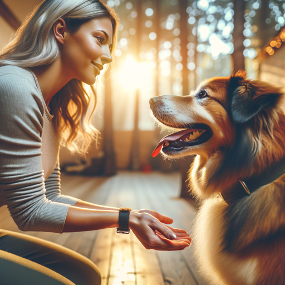
Addressing Behavioral Issues: Scientific Approaches to Common Canine Challenges
Despite our best efforts, many dog owners find themselves grappling with behavioral problems in their furry friends. Identifying these issues as more than just manifestations of disobedience is key to meaningful training. Issues like aggression and anxiety can root from numerous internal and external factors, making it essential to employ scientifically-backed strategies for effective resolution. Let’s delve into these behavioral challenges and explore research-driven solutions that can help restore harmony between you and your canine companion.
Understanding Common Behavioral Problems
Aggression
Aggression in dogs can manifest towards other dogs, humans, or in response to stimuli in their environment. Research indicates that aggression is often a form of communication rooted in fear, territorial instincts, or frustration. Identifying the triggers that lead to aggressive behavior is the first step in devising an effective training strategy.
Anxiety
Anxiety in dogs can present itself in various ways, including excessive barking, destructive behavior, and obsessive-compulsive actions. Various studies have demonstrated that anxiety may result from environmental factors, lack of socialization, or even genetics. Understanding the source of a dog’s anxiety is critical in creating a targeted approach to alleviate these feelings.
Research-Driven Solutions for Aggression
- Desensitization and Counter-Conditioning: For dogs exhibiting aggressive behavior due to fear, desensitization can be a powerful tool. This method involves gradually exposing the dog to the source of their fear (such as other dogs or loud noises) at a level that does not provoke an aggressive response while positively reinforcing calm behavior with treats or praise. Over time, this can help the dog learn to associate the previously feared stimulus with positive experiences.
- Behavior Modification Training: Employing positive reinforcement techniques during training has shown promising results in mitigating aggression. For example, if a dog is aggressive towards strangers, rewarding the dog for remaining calm when a visitor enters the home can help reinforce acceptable behavior. Starting with a distance where the dog feels safe and gradually decreasing that distance as they demonstrate calmer behavior can facilitate this process.
- Professional Intervention: In severe cases of aggression, consulting with a certified behaviorist is crucial. These professionals utilize their expertise to develop a comprehensive behavior modification plan tailored to the specific needs of your dog. This might include guided socialization sessions, obedience training, and behavioral assessments.
Research-Driven Solutions for Anxiety
- Gradual Exposure Techniques: Addressing separation anxiety can take time and requires a careful, incremental approach. Leaving your dog alone for brief initial periods, while pairing the experience with positive reinforcement—such as treats or toys—can help establish a positive association with being left alone. Gradually increasing times away can help with desensitization, making it easier for your dog to adjust to your absences.
- Environmental Enrichment: Providing a stimulating environment can significantly decrease anxiety levels. Interactive toys, puzzle feeders, and engaging training games can keep a dog occupied and mentally stimulated, reducing anxiety-driven behavior. Moreover, establishing a consistent daily routine can foster a sense of security for anxious dogs.
- Medication and Supplements: In some cases, medication or supplements may be appropriate for dogs suffering from severe anxiety. Consulting with a veterinarian can help determine if pharmacological intervention is the right course of action, and they can recommend specific medications or supplements, such as calming chews or anxiety reducing pheromones, that may alleviate anxiety symptoms.
Conclusion: The Path to Improved Behavioral Health
Addressing behavioral issues is crucial not only for the well-being of your dog but also for creating a harmonious living environment for both humans and canines alike. By employing scientifically-based approaches such as desensitization, behavior modification training, environmental enrichment, and consulting professionals when necessary, we empower our furry friends to overcome challenges like aggression and anxiety.
As you navigate the complexities of canine behavior, remember that patience and consistency are your greatest allies.

Future Directions in Dog Training Research: Advancements and Emerging Trends
As we continue to explore the intricate relationship between human behavior and canine learning, it becomes evident that dog training is not a stagnant field. It is an evolving discipline shaped by ongoing research and the application of cutting-edge techniques. This section delves into the future directions of dog training research, emphasizing advancements that hold promise for improving training efficacy and addressing behavioral challenges.
The Role of Technology in Dog Training Research
Innovative technologies are beginning to play a pivotal role in shaping modern dog training research. From wearable devices to artificial intelligence (AI), these tools offer new avenues for enhancing training approaches.
- Wearable Technology: Devices like smart collars can monitor a dog’s physical and behavioral responses in real time. These technologies provide trainers and owners with valuable data, such as heart rate and activity levels, helping them understand how environmental factors influence behavior. For example, a dog wearing a smart collar may exhibit increased anxiety in crowded spaces, guiding the trainer towards a tailored desensitization program.
- Artificial Intelligence: AI-driven training programs are emerging, capable of adapting their methodologies based on a dog’s learning style and responsiveness. These platforms can assess training progress and recommend specific adjustments to ensure better outcomes. Moreover, AI can aid researchers in analyzing vast amounts of behavioral data, leading to more refined training techniques grounded in empirical evidence.
Ongoing Research in Canine Learning and Behavior
Several current studies are focused on understanding the nuances of canine behavior and devising new training methods. Here are some noteworthy research areas:
- Understanding Canine Cognition: Research institutions and universities are examining how dogs think and learn, offering deeper insights into their cognitive processes. Studies focused on problem-solving abilities and decision-making skills are shedding light on how to effectively communicate with dogs, thus refining training methodologies. Collaborative efforts between behaviorists and cognitive scientists are paving the way for evidence-based advancements in training approaches.
- Impact of Socialization: Ongoing studies are further investigating the importance of early socialization on a dog’s long-term behavior. Researchers are exploring the critical windows during which socialization experiences can dramatically influence a dog’s response to new situations and stimuli. The outcomes of these studies could lead to new guidelines for early puppy training programs, ensuring dogs are better prepared for the complexities of life.
- Behavioral Genetics: Understanding the genetic predispositions that influence dog behavior is gaining traction in the research community. Studies focused on specific breeds and their tendencies towards certain behaviors can help trainers develop breed-specific training techniques. By recognizing inherited traits, trainers can tailor their approaches to benefit both the dog and the owner, ultimately enhancing the training experience.
Emerging Trends in Dog Training
As dog training research continues to expand, several trends are emerging that promise to shape future practices:
- Holistic Approaches: An increasing number of trainers are adopting a holistic view of the dog, recognizing the interconnectedness of behavior, health, and environment. This trend emphasizes the importance of a dog’s mental and physical well-being, leading to training methods that incorporate elements of enrichment, exercise, and even dietary considerations.
- Positive and Force-Free Methods: The shift towards positive reinforcement and force-free training principles is gaining momentum in the dog training community. Research supporting the effectiveness of these methods is widespread, leading to a broader adoption among trainers. The focus is on building a cooperative relationship between humans and dogs, enhancing learning outcomes while prioritizing welfare.
- Emphasis on Lifelong Learning: Training is increasingly being recognized as a lifelong journey rather than a one-time event. This perspective promotes the idea that continual learning and adaptability in training methods can lead to well-adjusted, behaviorally healthy dogs. Trainers are encouraged to engage in ongoing education and stay updated with the latest research findings.
Conclusion: The Path to Effective Training
As we look toward the future of dog training, it is clear that advancements in technology and ongoing research are paving the way for more effective, personalized training methods. Understanding canine behavior continues to inform and refine strategies for fostering a positive training environment that not only enhances obedience but strengthens the human-animal bond.
The combination of research insights and emerging trends, from the use of technological tools to an emphasis on holistic approaches, presents exciting possibilities for dog trainers and owners alike. If you are involved in dog training or have experienced the impact of these advancements, we invite you to share your thoughts in the comments below. What emerging trends have you noticed in your training experiences? And be sure to share this article with fellow dog enthusiasts to keep the conversation going!
news via inbox
Nulla turp dis cursus. Integer liberos euismod pretium faucibua

